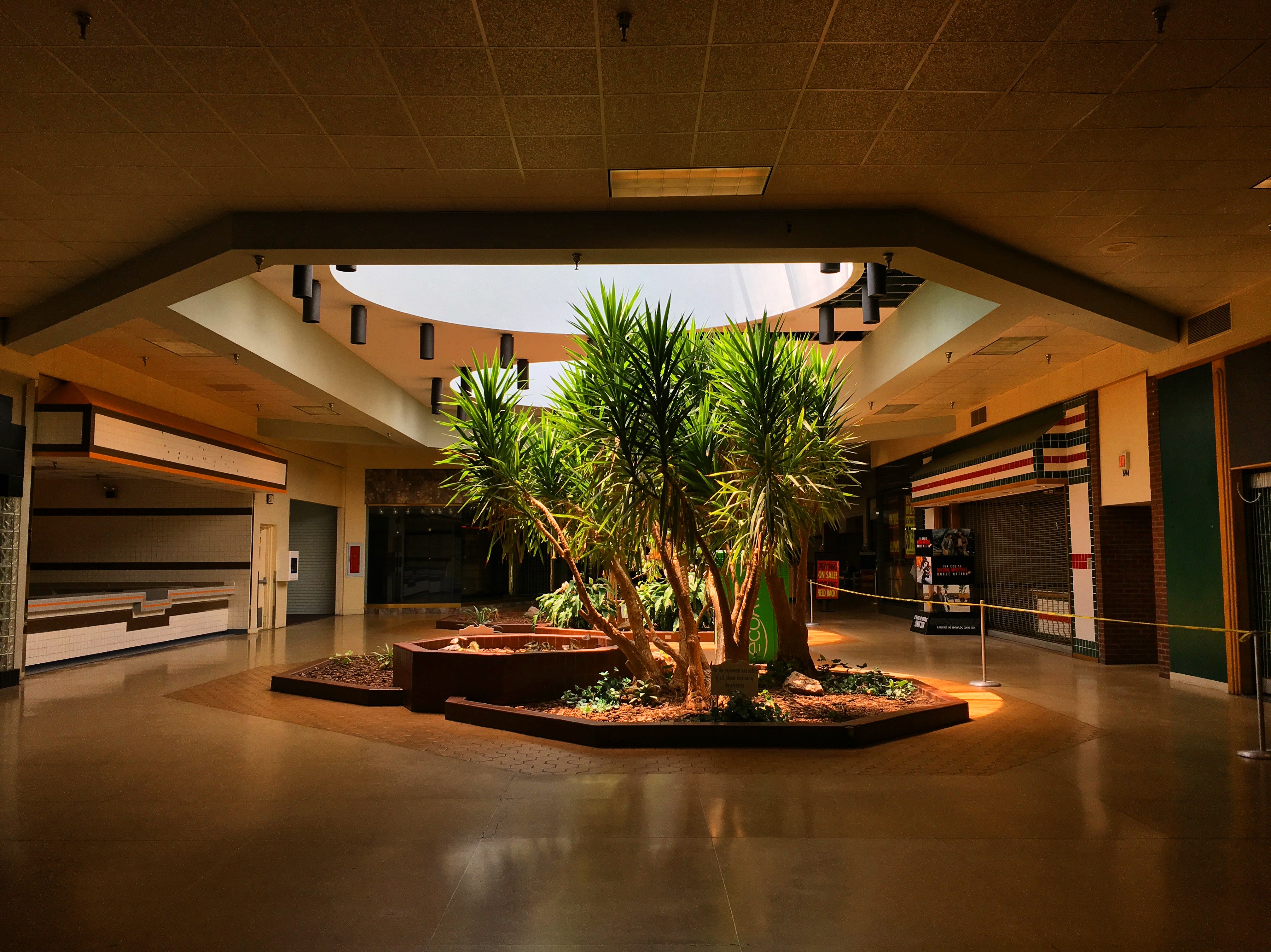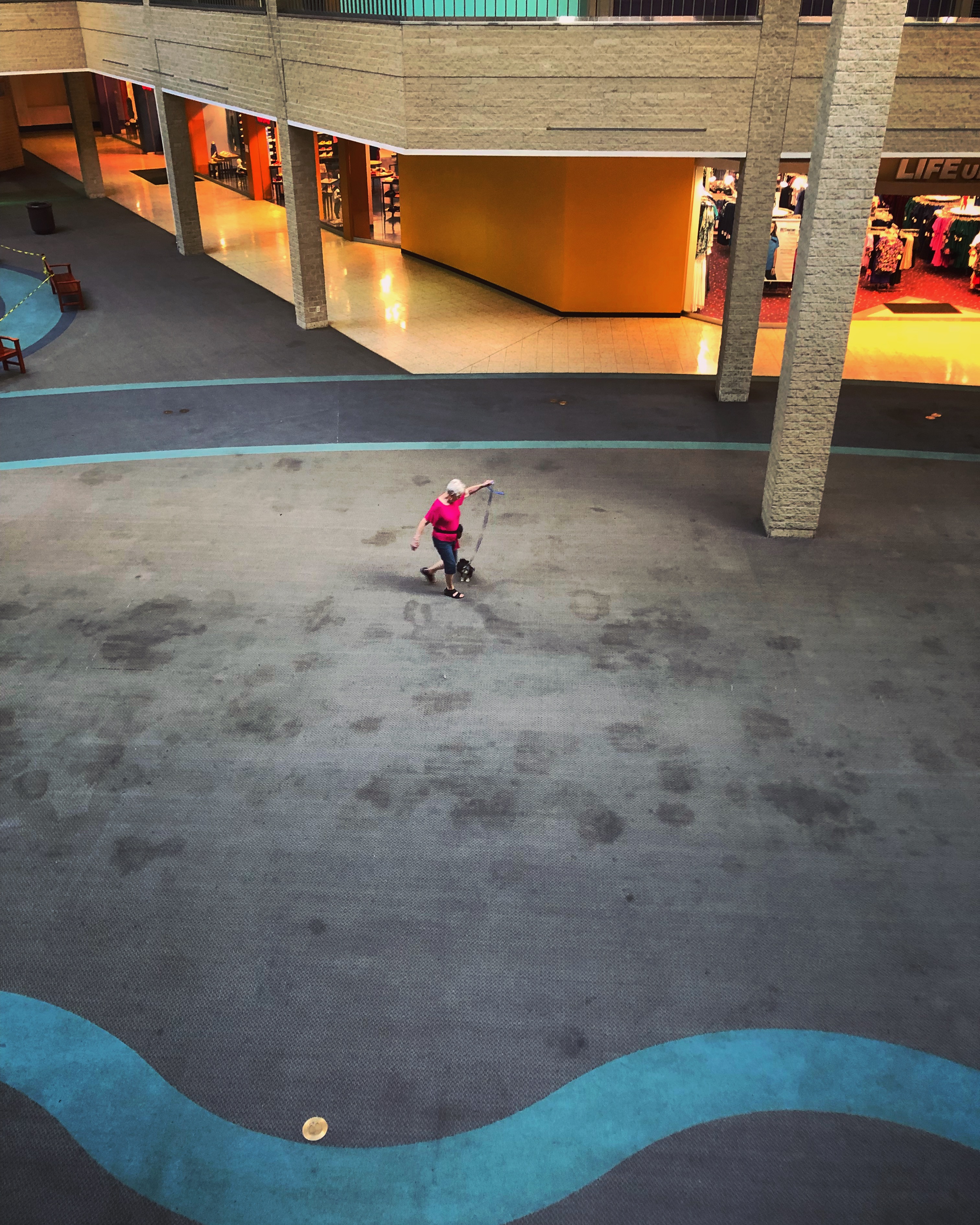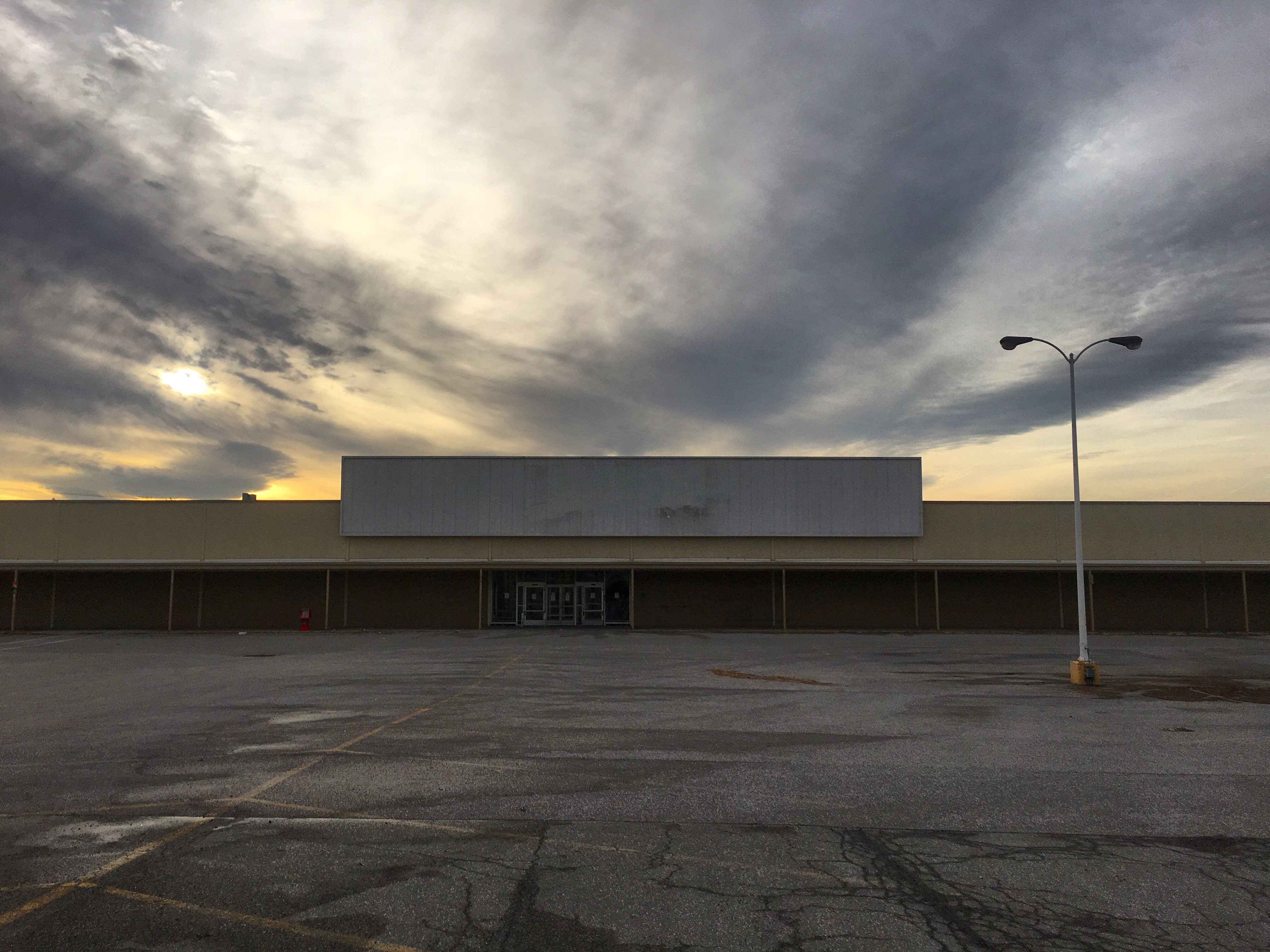Meet the man keeping America's dead malls alive
Is there hope for our once-beloved social and commercial centers?


There is something utterly fascinating about a dead mall.
Is it the feelings that are evoked by the eerie stillness of a once bustling place? Could it be that we're still trying to grasp how centers that were once so vital, their stores selling all the things you ever thought you'd need, have been replaced by a virtual version of themselves? Or maybe it's because of the memories they stir up — remember flirting with the cute boy who worked in the food court, trying not to squeal while getting your ears pierced at the jewelry store, or picking up your tux for prom in the formal shop?
Dead malls are shopping centers that have either closed down entirely or are on their last legs, with most of the shops empty and main anchors shuttered, resulting in little foot traffic. As of July, 7,062 stores have closed in the United States this year, with only 3,017 opening; in 2018, 5,864 stores shut down and just 3,258 opened. In April, UBS released a report estimating 75,000 more retail locations will be out of business by 2026 — including 21,000 clothing stores, 10,000 electronics stores, and 8,000 furniture stores — as online shopping is expected to make up 25 percent of retail sales by then.
The Week
Escape your echo chamber. Get the facts behind the news, plus analysis from multiple perspectives.

Sign up for The Week's Free Newsletters
From our morning news briefing to a weekly Good News Newsletter, get the best of The Week delivered directly to your inbox.
From our morning news briefing to a weekly Good News Newsletter, get the best of The Week delivered directly to your inbox.

There are lots of reasons why malls are dying, from the rise of online shopping and some retailers' slow adaptation to the middle class shrinking and younger people, struggling to pay off student loans and find affordable housing, not having the money to spend on shiny new things.
Filmmaker and producer Dan Bell knows dead malls — since 2014, he's been documenting these crumbling bastions of consumerism. It started with Bell wanting to explore malls he remembered from his childhood in Maryland, but "gradually it got to a point where I was like, maybe I should start filming them and putting them on YouTube as a digital archive," he told The Week.
The rise of the mall came in the 1980s, a time of "yuppie excess and money and spending as much money as you could," Bell said. "Malls sort of reflect that. The upscale malls, especially from that era, have the gaudiest glamour possible — brass, palm trees, and neon. ... Nothing can exemplify the era better."
Malls now have a completely different meaning than they did 30 years ago, when people — especially teenagers — went to meet friends, go on dates, and just hang out. "Today, there is no social meaning to a mall," Bell said. "It's not the center of the community anymore. We have Facebook now, and Instagram and Twitter. Mall-age people now hang out on Facebook all day, complaining and taking pictures of their food. ... You used to take your pictures to the mall and bitch about things at the mall with friends. We've digitized the food court."
A free daily email with the biggest news stories of the day – and the best features from TheWeek.com
Bell has been to dead and dying malls across the United States, all in various states of disrepair. Going into certain abandoned malls has been a trip — he's stumbled upon frozen-in-time Subway sandwich shops with the old-school wallpaper, and a sign for a Ben Franklin Crafts store in perfect condition, 30 years after it closed. "It was sealed off inside of this building for decades," he said. "It kind of gives you the chills."
By the time Bell arrived at the Rolling Acres Mall in Ohio, the building had been stripped of anything worth money, and there was a strange fungus growing on the ground, with puddles everywhere. The floor had an oily sheen to it, and he slipped; because there were no railings, he almost fell down to the first floor. At another abandoned mall, donning a mask and protective suit, he walked into an eerie defunct Ames department store, with rows and rows of Hallmark greeting cards, surrounded by mold. "I could see why people are drawn to that kind of thing," he said. "In a weird way, it's like a video game and a post-apocalyptic movie and a nightmare all wrapped into one."

Bell has met shopkeepers who will do anything to keep their stores afloat — in the Carolinas, he went to a mall that didn't have air conditioning, so a couple operating one place brought in a block of ice, placed it on top of a stool in the middle of a kiddie pool, and had fans blowing on it to keep the store cool.
"A lot of the employees and business owners I speak to, a running theme is the management company never tells the truth about anything," he said. "They send out false optimism, saying great things are going to happen, but these great things never include the people they are telling. It's so exciting, but then two months later, here's your eviction notice."
By going to so many dead malls, Bell has started noticing certain stores are always there until the bitter end — Bath and Body Works, GNC, Victoria's Secret — and has picked up on when management is just trying to keep up appearances, signaling it's almost time to start writing the eulogy.
"They get these big posters and banners to put across these gated stores, and it's always two women shopping and really happy," he said. "It says, 'Wait 'til you see what's coming next!' It should be a picture of a pile of rubble. It's an ideal look at what the mall should be, but never will be again. It's sad, and sometimes it's real depressing."

Management can deal with leaky pipes, missing tiles, and empty fountains, but once the roof goes, that's the death rattle.
"Most of these malls shut down because of the roof," Bell said. "They can't afford to get a new roof. The local government comes in and says listen, you've got to get a new roof or we'll keep giving you citations. You've got 750,000 square feet, which would cost you $3,4,5 million. They don't have that money, so they close."
Not every mall in America is dying — luxury ones especially are thriving. The South Coast Plaza in Orange County, California, is the largest mall on the West Coast, filled with dozens of high-end stores, from Gucci to Cartier to Hermés. About 22 million visitors walk through the doors every year, and mall merchants sell at least $1.5 billion in goods and services annually. At the posh Bal Harbour Shops in Miami, home to Balmain, Chloé, Dior, and Harry Winston boutiques, there is a waiting list to open a store, as the mall has operated at 100-percent capacity for the last several decades. There are also success stories about people who buy malls in their community and, knowing the demographics, are able to turn things around.
Bell has been to some of these stand-out properties too, and was especially stunned by the opulence he saw in Bal Harbour. "The mall is gorgeous," he said. "There are palm trees, beautiful ponds with koi fish, they had a McLaren inside. There were glamorous models walking around in clothes from some of the stores. It was really beautiful. If you're a regular American you can't afford to go there. When I was in there, I thought, 'This is way too fancy for me,' but I wanted to show people an example of what is working."
Dead malls leave behind giant footprints, and the big question is — what do you do with this huge vacant property? Left abandoned too long, these buildings are often vandalized, and become eyesores as the paint begins to peel and the weeds start springing up.

In some cases they've been successfully transformed; some have been turned into homeless shelters, others charter schools. The Mall of America in Minneapolis just announced it is partnering with the University of Minnesota to open a 2,300 square-foot walk-in medical clinic. The idea is that after getting a flu shot, people will stick around to do some shopping. Real estate analyst Drew Myers told CNN that since 2017, mall leases for clothing retailers have dropped by more than 10 percent, while medical clinics at malls are up 60 percent.
"In my own head I have lots of ideas on how to repurpose a mall, but none of them I think would really take off in the real world," Bell said. "I would love to live in a mall. Wouldn't it be cool to have each store be a house? I would love that, but it's not realistic. These buildings were built to wow the public and to bring people in to shop, and they served their purpose. Most of the time, in order for these communities with dead or shuttered malls to move forward, they need to demolish and rebuild."
Lamenting the replacement of one thing with another isn't a new thing — in fact, it happened when malls first started popping up, challenging downtown business districts. "Netflix killed Blockbuster, iTunes killed CDs and tapes," Bell said. "It's just everything got easier and quicker and more sophisticated, and malls were never sophisticated."
Catherine Garcia has worked as a senior writer at The Week since 2014. Her writing and reporting have appeared in Entertainment Weekly, The New York Times, Wirecutter, NBC News and "The Book of Jezebel," among others. She's a graduate of the University of Redlands and the Columbia University Graduate School of Journalism.
-
 Political cartoons for December 15
Political cartoons for December 15Cartoons Monday’s political cartoons include Time's person of the year, naughty and nice list, and more
-
 Who is fuelling the flames of antisemitism in Australia?
Who is fuelling the flames of antisemitism in Australia?Today’s Big Question Deadly Bondi Beach attack the result of ‘permissive environment’ where warning signs were ‘too often left unchecked’
-
 Bulgaria is the latest government to fall amid mass protests
Bulgaria is the latest government to fall amid mass protestsThe Explainer The country’s prime minister resigned as part of the fallout
